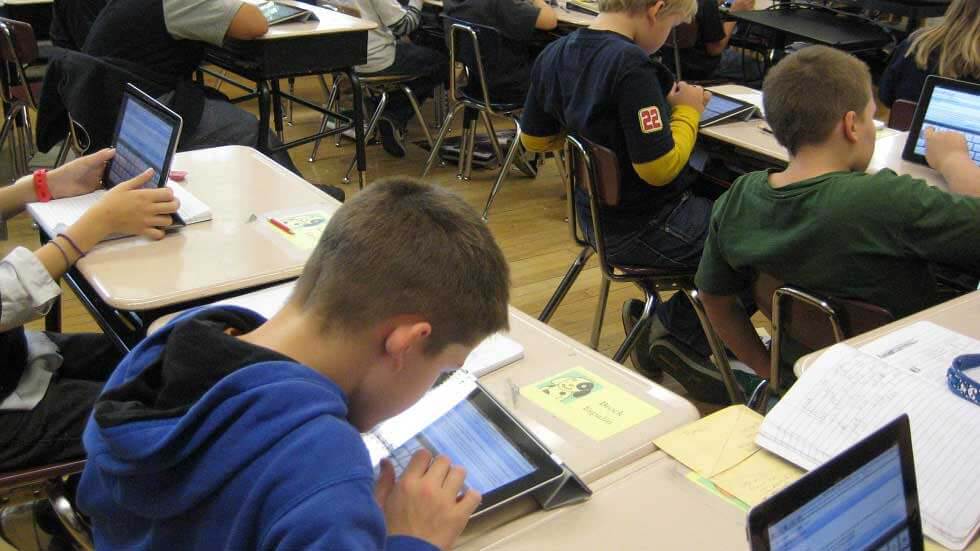Do you remember the classrooms of your school days? The blackboards, chalks, copies and so on? If you go to a classroom of today to revisit those days and refuel your memories, well, dear reader, I’m afraid you might be disappointed.
Because the classrooms have undergone a sea-change over the years, thanks to the immense advancements in the field of technology. In fact, a large number of schools are even implementing Bring Your Own Device (BYOD) policy to make technology an essential part of the learning procedure at the school.
So, is implementing BYOD in the schools really helpful? Are there any real benefits? Or, are there some specific disadvantages?
This surely leaves room for enough debate.
In fact, implementing BYOD in the classroom can lead to both – a number of advantages and disadvantages.
So, what are they?
Here’s a quick look at the pros and cons of using BYOD in schools.
- Learning is driven by the student’s love for his devices.
- The students love the learning method; so, they remember the lessons.
- Students can be more organized while learning.
- Both teachers and students can make full use of mobile apps for learning.
- Learning doesn’t remain confined within the classroom, but goes beyond.
The Student’s Love for His Devices Drives Learning
Students these days are more tech savvy than ever before. They prefer clinging to their gadgets and hardly part with them.
The concept of BYOD is based primarily on an effort to leverage this habit of the members of the current generation. As the students prefer to remain glued to their gadgets, they are likely to remember the lessons that are imparted through those. So, the love for the devices is expected to help the students prepare their lessons in a more effective way.
A Preferred Learning Method Helps to Remember Lessons
Teaching the whole class in a similar fashion without catering to the varied needs of each student – well, this seems to be a thing of the past. It is essential these days to customize the teaching method to reach out to each student separately. And this is where BYOD comes in handy.
The gadgets help to give shape to differentiated instruction. In fact, the students are able to control how they want to learn the lessons. This surely is a great stride forward, as embracing the preferred way to learn is likely to help the students remember the lessons for a longer time.
Being Organized becomes Easier
Time: sometime in the 1990s. Enter a classroom and you will find copies and books disheveled on the desks of the students. Fast forward to a classroom in 2015: they surely look more organized, thanks to the use of technological devices. These devices have made the process of organizing notes easier than ever before for the students. So, they are not likely to lose any note and freak out just before the day of the exam. Because they are going to have all the notes and assignments in their device itself. Even the ebooks can be stored in the devices for the students to read. And note taking also becomes way easier with these mobile apps.
Apps Can be Used to Ease Learning
Speak of devices these days and you almost have an endless list. From smartphones to tablets and more, all of these devices offer the best opportunities to learn. Many of them can help to use different apps, which can come in handy to learn various subjects, such as mathematics, English, and so on. Besides, the teachers can also use the apps to connect with the students in a way that’s smarter than ever before.
Learning Goes beyond the Classroom
One of the major issues with the chalk and blackboard form of education is that it is confined within the four walls of the classroom. But once you implement BYOD in the classroom, you can expect the process of learning to go beyond as well.
Most of the training in the classroom are done with the help of the devices that the students bring to the school. So, the lessons are stored in there and the students can go through those whenever they wish, even while on the go.
There surely are a few negative aspects of implementing BYOD in schools. For example, it can lead to distraction or can create a gap between the haves and the have-nots. But the major advantages offered by BYOD in schools are likely to undermine these minor issues. It also reduces the overhead costs of the schools, as they do not need to set up the devices necessary for studying. These benefits are driving the popularity of BYOD in schools and it is, no doubt, fast emerging as the next big thing in the world of educational technology.
